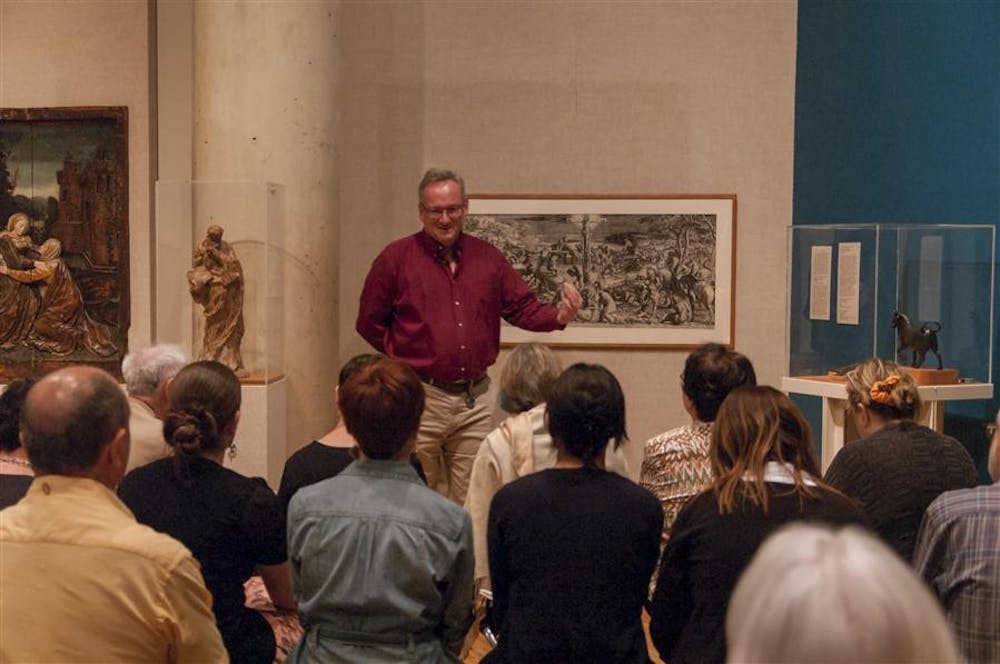Michelangelo. Raphael. Titian.
Most people recognize the names of the great Renaissance painters. But what about the artists who brought their styles together? During the semester’s first “Noon Talk” Wednesday at IU Art Museum, art history associate professor Giles Knox discussed the Carracci family’s influence on post-Renaissance art.
Brothers Annibale and Agostino Carracci, along with cousin Ludovico Carracci, wanted to move forward after the High Renaissance and the religious implications of the Counter-Reformation.
Here are a few of the ways the three Carraccis set the course for Italian art reform.
They were printmakers as well as painters
Agostino created a three-plate engraving titled “The Crucifixion,” based on a painting by Tintoretto.
Knox praised Agostino for clarifying the work with a well-blended background landscape and improving the positioning and scale of Christ on the cross.
“Prints rarely attract the same kind of focus as painting,” Knox said. “But this print did.”
A small selection of prints by Annibale and Agostino are on permanent display in the Gallery of the Art of the Western World.
They popularized the post-renaissance Italian style
Knox said Italian artist Carravaggio, who trained under Titian, found his own style in this period but was too individualistic to popularize it.
The Caraccis harmonized other styles and made it popular with the influence of their art academy.
“The way forward was to combine what Michelangelo has done with what Titian had done,” Knox said.
They formed one of the first Italian art academies
The Carraccis created the Accademia degli Incamminati, which translates to the “Academy of Those Opening a New Way,” around 1580
.
An emphasis was placed on creating figures and scenes from life, as well as developing an emotional atmosphere in artistic works.
“This school was responsible for teaching a whole range of artists of the 17th century,” Knox said. “The mainstream was established by the Caracci figures.”
Museum talks reform at 1st ‘Noon Talk’

Get stories like this in your inbox
Subscribe





